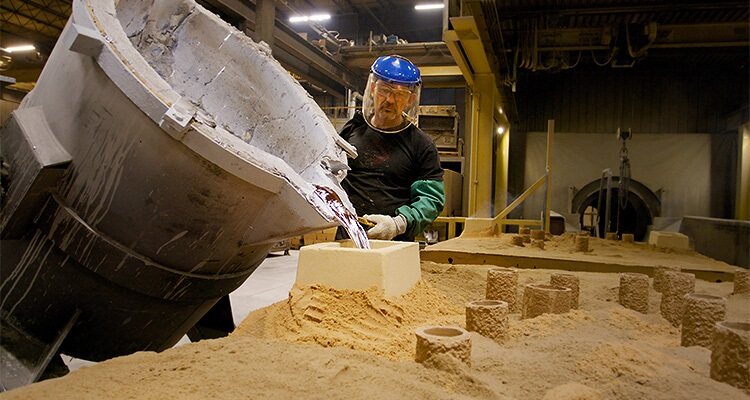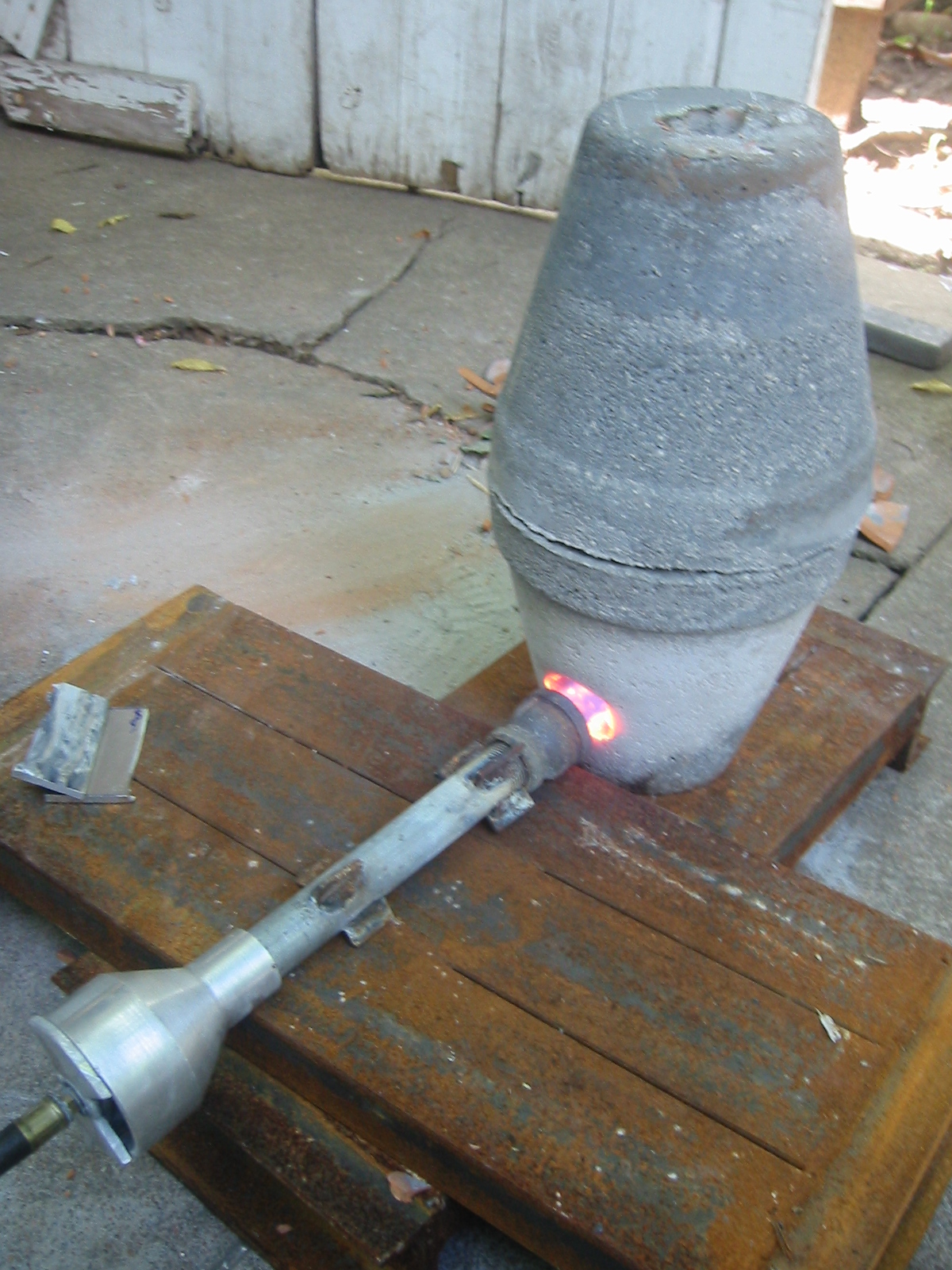Why modern Aluminum Foundry operations is critical for green production practices
All About Aluminum Foundry: Secret Uses and Its Influence on Item Growth
Aluminum foundries are vital in contemporary manufacturing, especially in sectors like auto and aerospace. They use advanced techniques to develop light-weight, durable elements that improve performance. The flexibility of aluminum additionally aligns with sustainability campaigns, making it a recommended material. The recurring developments in casting techniques and their implications for product advancement raising crucial questions. What future advancements might reshape the landscape of aluminum foundries and their applications?
Overview of Aluminum Foundries
Aluminum foundries act as important centers in the metalworking sector, focusing on the casting of aluminum and its alloys. These centers make use of various approaches, consisting of sand casting, die casting, and investment casting, to change raw aluminum into usable forms. Each casting method provides one-of-a-kind advantages, satisfying different task demands ranging from tiny parts to large architectural components.
The foundries run through a precise procedure that starts with melting aluminum, adhered to by putting the molten steel into molds. After cooling down, the castings undertake ending up processes, which may entail machining and surface therapy to meet accurate specifications.
Quality assurance is vital, ensuring that the last products satisfy market standards and client expectations. Additionally, aluminum foundries usually emphasize sustainability by reusing scrap aluminum, consequently reducing waste and conserving sources. This commitment to efficient production and environmental responsibility settings aluminum foundries as crucial factors to the manufacturing landscape.

Key Applications of Aluminum Castings
Aluminum castings offer important duties in various industries, especially in automobile and aerospace markets. In the automobile industry, they add to lightweight structures and effective performance. Aerospace element production relies on aluminum castings for their toughness and corrosion resistance, important for high-performance applications.
Automotive Market Applications
In the auto sector, aluminum castings play an essential function in enhancing vehicle performance and performance. These castings are widely utilized for parts such as engine blocks, transmission housings, and suspension parts. Their light-weight nature contributes to minimized vehicle weight, which subsequently boosts gas economic situation and handling. Additionally, aluminum's exceptional thermal conductivity allows for reliable warm dissipation, crucial for high-performance engines. The deterioration resistance of aluminum likewise prolongs the life-span of auto elements, lowering maintenance costs. Moreover, improvements in casting technologies enable the manufacturing of complex shapes, optimizing the style and capability of components. On the whole, aluminum castings are essential to contemporary auto engineering, sustaining development and sustainability in vehicle layout.
Aerospace Element Manufacturing
The aerospace industry increasingly depends on aluminum castings for a variety of essential elements due to their beneficial residential properties. Light-weight yet strong, aluminum castings enhance gas performance and overall efficiency in aircraft layout. Parts such as engine mounts, structural frameworks, and landing equipment are typically generated making use of aluminum casting strategies, enabling suppliers to accomplish complicated geometries while maintaining structural stability. The high resistance to corrosion and thermal properties of aluminum likewise add to the longevity and reliability of aerospace parts. Furthermore, advancements in casting innovations, such as precision casting and 3D printing, have actually increased the capabilities of aluminum in this industry. Eventually, aluminum castings play an essential role in meeting rigid safety and security criteria and efficiency requirements in modern aerospace applications.
Advantages of Utilizing Aluminum in Manufacturing
While many materials are available for production, aluminum attracts attention as a result of its unique combination of residential properties that boost performance and efficiency. One substantial benefit of aluminum is its light-weight nature, which contributes to decreased energy consumption and improved fuel efficiency in various applications. Additionally, aluminum shows excellent deterioration resistance, expanding the life-span of products and reducing upkeep expenses. Its high thermal and electrical conductivity makes it appropriate for heat exchangers and electric elements, while its malleability permits for functional styles and detailed forms.
Furthermore, aluminum is recyclable, advertising sustainability in making processes. This reusability not just saves sources yet likewise reduces the carbon footprint linked with manufacturing. The versatility of aluminum to various alloys better boosts its utility in varied markets, from automobile to consumer electronic devices. Jointly, these qualities make aluminum a suitable selection for suppliers seeking to balance performance, cost-effectiveness, and ecological duty.
Developments in Casting Methods
Recent improvements in casting techniques have actually considerably changed the aluminum foundry market. The combination of 3D printing technology has enabled more complex designs, while enhanced alloy solutions boost performance and longevity. These developments are driving performance and expanding the applications of aluminum in numerous industries.
3D Printing Combination

Improved Alloy Formulations
Improvements in aluminum shop innovation have actually caused the advancement of improved alloy formulations that enhance casting efficiency and product residential properties. These ingenious formulas often integrate aspects such as silicon, magnesium, and copper, which optimize toughness, ductility, and corrosion resistance. By fine-tuning the compositions, suppliers can achieve certain qualities customized to varied applications, from vehicle to aerospace sectors. Furthermore, these boosted alloys facilitate better fluidity throughout the casting procedure, decreasing issues and enhancing surface coating. Consequently, the efficiency of production is greatly increased while keeping strict top quality criteria. This development in alloy advancement not only enhances manufacturing yet also supports the production of lighter, check over here stronger components, ultimately progressing product development and efficiency.
Influence on Aerospace and Automotive Industries
The noteworthy effect of aluminum foundries on the aerospace and auto markets can not be overemphasized. Aluminum alloys, understood for their lightweight and high stamina, have revolutionized the design and production procedures in both sectors. In aerospace, the decrease in weight directly visit here correlates to sustain efficiency, allowing for longer flights and lower exhausts. Components such as airplane frames, wings, and engine components benefit from aluminum's excellent exhaustion resistance and corrosion resistance.
In the auto industry, aluminum foundries add to the manufacturing of lighter automobiles, enhancing performance and gas economy while satisfying rigorous environmental guidelines. The use of aluminum in engine blocks, body panels, and wheels has increased substantially, driven by consumer demand for much more reliable lorries. In addition, technologies in casting techniques have actually boosted the accuracy and performance of parts, making it possible for makers to develop more incorporated and intricate styles, therefore promoting innovations in both markets.
Sustainability Practices in Aluminum Foundries
Aluminum foundries are increasingly welcoming sustainability methods to lower their environmental impact while fulfilling the expanding demands of the aerospace and automobile industries. These practices consist of the implementation of energy-efficient modern technologies, such as electrical melting furnaces and advanced heat recovery systems, which considerably lower power consumption (Aluminum Foundry). On top of that, several foundries are focusing on using recycled aluminum, which calls for much less energy and results in reduced greenhouse gas emissions compared to primary aluminum production
Water preservation initiatives are additionally acquiring traction, with foundries using closed-loop systems to decrease water usage and stop contamination. In addition, waste administration approaches, including reusing scrap and reducing dangerous waste, add to an extra sustainable procedure. By adopting these techniques, aluminum foundries not just enhance their competition however also line up with global sustainability objectives, ultimately supporting a round economy and promoting innovation in eco-friendly production processes.
Future Trends in Aluminum Casting Modern Technology
As the demand for lightweight and sturdy products continues to climb, advancements in casting technology are poised to improve the aluminum market. Advanced methods such as 3D printing and automated casting processes are gaining traction, allowing my company for much more intricate geometries and decreased product waste. The assimilation of expert system and artificial intelligence is also boosting top quality control and procedure optimization, reducing issues and enhancing performance.
Additionally, the development of brand-new aluminum alloys is increasing the application range of cast items, making them ideal for industries from automobile to aerospace. Enhanced reusing approaches are expected to even more lower environmental influences, lining up with worldwide sustainability objectives.
Additionally, using wise sensors in casting procedures is anticipated to allow real-time tracking, guaranteeing higher accuracy and consistency. These trends symbolize a transformative era in aluminum casting modern technology, enabling makers to satisfy developing market needs while focusing on sustainability and innovation.
Often Asked Questions
Just How Is Aluminum Recycled After Use in Products?
Aluminum reusing includes gathering, arranging, and melting utilized aluminum items (Aluminum Foundry). The molten steel is after that cast right into brand-new kinds, decreasing power usage and preserving natural deposits, making it a reliable and sustainable process for aluminum recuperation
What Precaution Are Implemented in Aluminum Foundries?
Precaution in aluminum foundries consist of correct air flow systems, individual safety equipment, routine safety and security training, tools upkeep procedures, and emergency response strategies, all focused on minimizing threats connected with high temperature levels and unsafe products during production.
Exactly How Do Aluminum Foundries Ensure Quality Control?
Aluminum foundries apply strenuous high quality control processes, including material inspections, temperature level tracking, and dimensional checks. These procedures assure product uniformity, lower issues, and stick to sector criteria, ultimately boosting client contentment and functional performance.
What Prevail Difficulties Dealt With by Aluminum Foundries?
Aluminum foundries commonly face challenges such as keeping constant quality, managing production costs, making certain prompt distribution, attending to tools maintenance, and adapting to evolving industry laws. These factors can greatly impact total functional performance and success.
How Does Aluminum Spreading Affect Item Weight?
Aluminum casting significantly lowers product weight due to aluminum's reduced thickness compared to various other steels - Aluminum Foundry. This lightweight particular enhances style versatility, boosts gas efficiency in transportation applications, and offers advantages in various markets requiring weight-sensitive parts